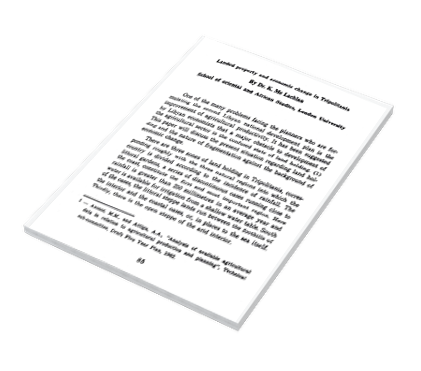Landed property and economic change in Tripolitania
DOI:
https://doi.org/10.37376/jofoa.vi2.3066الملخص
One of the many problems facing the planners who are for mula ting the second Libyan national development plan is the improvement of agricultural productivity. It has been suggested by Libyan economists that a major obstacle to development of the agricultural sector is the confused state of land holding. (1) This paper will discuss the present situation regarding land hol ding and the nature of fragmentation against the background of economic change.
There are three zones of land holding in Tripolitania, corres ponding roughly with the three natural regions into . which the country is divided according to the incidence of rainfall. The littoral gardens, a series of discontinuous oases running close to the coast, constitute the first and most important region. Here rainfall is greater than 250 millimetres in .an average year and water is available for irrigation from a shallow water table. South of the oases, the littoral steppe lands run between the foothills of the interior and the coastal .oases, or, in places to the sea -itself. Thirdly, there is the open steppe of the arid interior.
التنزيلات

التنزيلات
منشور
كيفية الاقتباس
إصدار
القسم
الرخصة
الحقوق الفكرية (c) 2022 مجلة كلية الاداب

هذا العمل مرخص بموجب Creative Commons Attribution-NonCommercial-NoDerivatives 4.0 International License.




